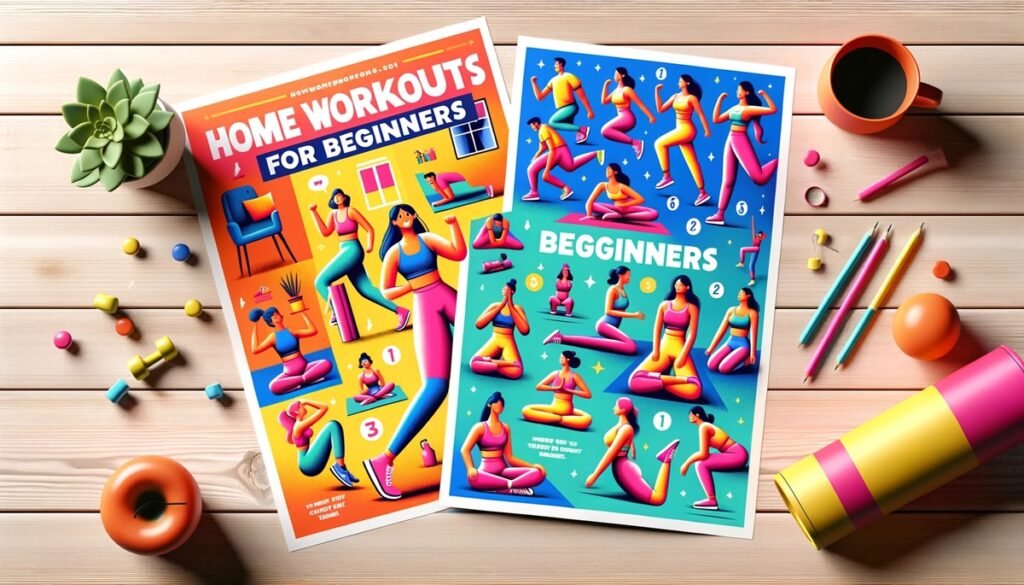
Starting a fitness journey can be daunting, especially if you’re unsure where to begin or feel overwhelmed by gym environments. Home workouts are a fantastic solution, offering convenience, privacy, and flexibility. This blog will guide beginners through setting up a simple yet effective workout routine at home, explaining the benefits, necessary equipment, and some easy exercises to get started.
Contents
Benefits of Home Workouts
Home workouts provide several advantages, especially for beginners:
- Convenience: Exercise at any time, without commuting or adhering to a gym schedule.
- Cost-effective: Save on gym fees and expensive equipment.
- Customizable: Tailor your workouts to fit your specific needs and pace.
- Privacy: Work out without feeling self-conscious.
Setting Up for Success
Before diving into the exercises, setting up a conducive workout space and having the right equipment is crucial:
- Space: Choose a quiet, spacious area of your home. It doesn’t need to be large, but enough for you to move freely.
- Equipment: Start with basics like yoga mats, resistance bands, and dumbbells. As you progress, consider adding more equipment.
- Atmosphere: Ensure good ventilation and, if possible, natural light. Playing energizing music can also boost your motivation.
Beginner-Friendly Home Workout Routine
Here’s a simple routine that doesn’t require advanced fitness levels or complex equipment. Perform each exercise for 30-60 seconds, rest for 30 seconds, and repeat the circuit 2-3 times. Adjust the intensity according to your fitness level.
- Warm-Up
- Jumping Jacks: Increase heart rate and loosen up your muscles.
- Arm Circles: Warm up the shoulders and arms for upper body exercises.
- Core Exercises
- Planks: Start on your elbows and toes, keeping your body in a straight line.
- Bicycle Crunches: Lie on your back and mimic a cycling motion to engage the core.
- Lower Body
- Squats: Stand with feet shoulder-width apart, squat down keeping your back straight, then return to standing.
- Lunges: Step forward with one leg, lower your hips to drop your back knee toward the floor, then push back up.
- Upper Body
- Push-Ups: Begin in a plank position and lower your body until your chest nearly touches the floor.
- Dumbbell Rows: Bend slightly forward, holding a dumbbell in each hand, and pull the weights up to your chest.
- Cool Down
- Stretch: Focus on stretching all the major muscles you’ve worked.
- Deep Breathing: Wind down with deep, relaxing breaths to calm your heart rate.
Conclusion
Starting a home workout routine can revolutionize your health, fitness, and overall well-being. Remember, consistency is key to seeing progress. Make adjustments as needed and gradually increase the intensity and duration of your workouts as you get stronger.
FAQs about Home Workouts for Beginners
Q: How long should a beginner workout last?
A: Beginners should aim for 20-30 minutes per session. As you build stamina and strength, you can gradually increase this time.
Q: Do I need any special equipment to start working out at home?
A: No, you can perform many effective exercises with just your body weight. Basic equipment like dumbbells and resistance bands are helpful but not necessary initially.
Q: How often should I workout as a beginner?
A: Aim for 3-4 times a week. This allows you to build a habit while also providing ample rest days for recovery.
Q: What if I experience pain during workouts?
A: Mild discomfort is normal as you challenge your muscles, but sharp or persistent pain is a sign to stop and consult a professional. Always listen to your body and modify exercises as needed to prevent injuries.